Well-deserved recognition
In recent years, Vietnamese cuisine has been honored many times in international rankings. From prestigious organizations to online polls, pho, vermicelli, banh mi, com tam... have all been praised by many tourists.
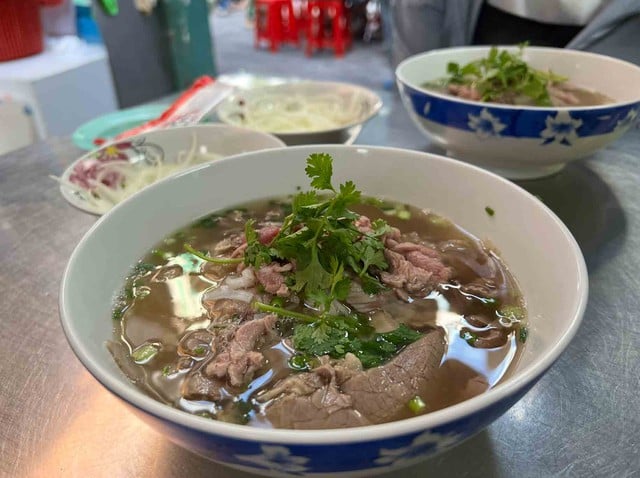
Pho Dau - famous Northern pho restaurant in Ho Chi Minh City
PHOTO: LE NAM
Most recently, Vietnam was named with a high position when it entered the top 4 countries with the most attractive cuisine in the world in 2025.
According to the Readers' Choice Awards 2025 organized by travel magazine Condé Nast Traveler , Vietnam scored 96.67 points and ranked 4th in the ranking of "Countries with the most attractive cuisines in the world". This is the result of a global reader vote, based on many criteria such as street food, breakfast buffets, high-end restaurants, and overall taste experience.
Leading the way are Thailand (98.33 points), Italy (96.92 points) and Japan (96.77 points) and Vietnam ranked 4th, surpassing many strong names such as France and Spain.
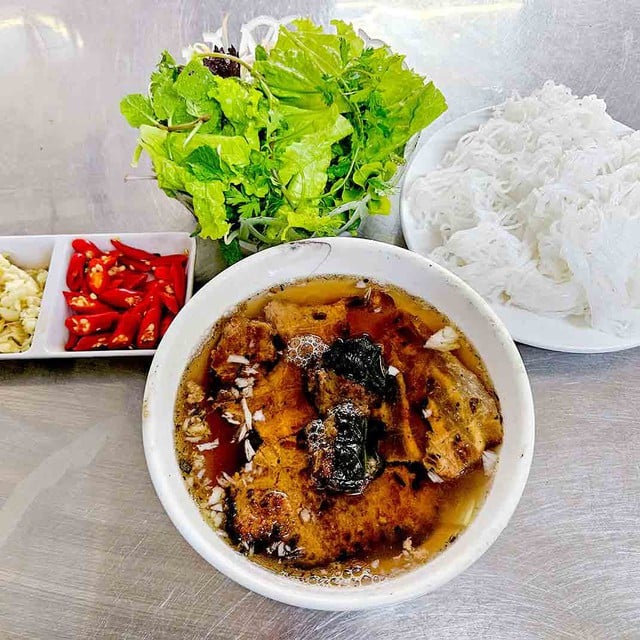
Bun cha chan - one of the dishes honored by Michelin
PHOTO: Organizing Committee
Talking about the new position of Vietnamese cuisine in the international arena, chef Hoang Tung, founder
A by TUNG and TUNG Dining (2 restaurants in Hanoi and Ho Chi Minh City) were honored by Michelin, saying that rankings are often relative, but what is at the top is always at the top. Like the passport rankings, the top countries only take turns but are still at the top. With Vietnamese cuisine, being ranked in the top of the world is obvious, it is a worthy recognition.
Chef Tung believes that Vietnam has great culinary potential thanks to its geographical diversity, from mountains, midlands, plains to seas and even deserts. "Each region has its own source of ingredients. If the young generation of chefs knows how to exploit this treasure well, they will have endless inspiration to create dishes with Vietnamese identity," he shared.
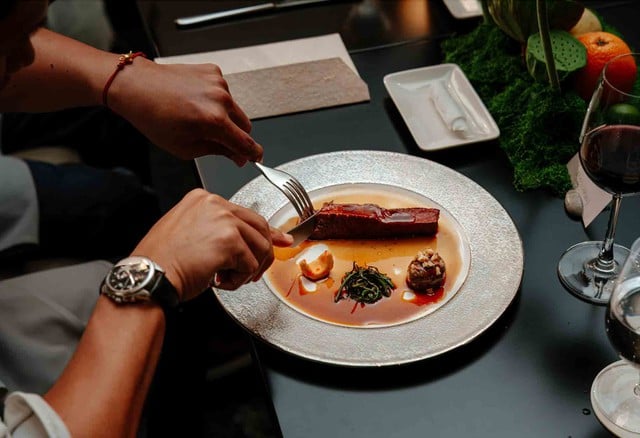
From popular to high-end restaurants, Cu Chi beef served with Vietnamese vegetables and fruits
PHOTO: Organizing Committee
Sharing about Vietnamese cuisine with this new achievement, Mr. Erwin Popov, General Manager of Caravelle Saigon Hotel, said: "I really love Vietnam and Vietnamese cuisine. We are orienting the menu towards a modern trend but still keeping the spirit of fresh, refreshing Vietnamese cuisine, based on rich and quality local ingredients and agricultural products. The hotel still prioritizes dishes, but will streamline the way and focus on fresh, natural ingredients to be better for the health of diners, hoping to contribute to promoting more Vietnamese culinary flavors to international guests."
Cuisine "attracts" visitors to Vietnam
For many people, each trip is not only a journey to explore scenic spots but also a journey to find flavors. Besides the question "where to go, what to do?", what tourists are equally interested in is "what to eat there?" or "what are the specialties of that region?".
Culinary experiences have long been an integral part of travel, especially for long-term trips. A rich culinary culture also reflects the cultural diversity and personality of the local people.
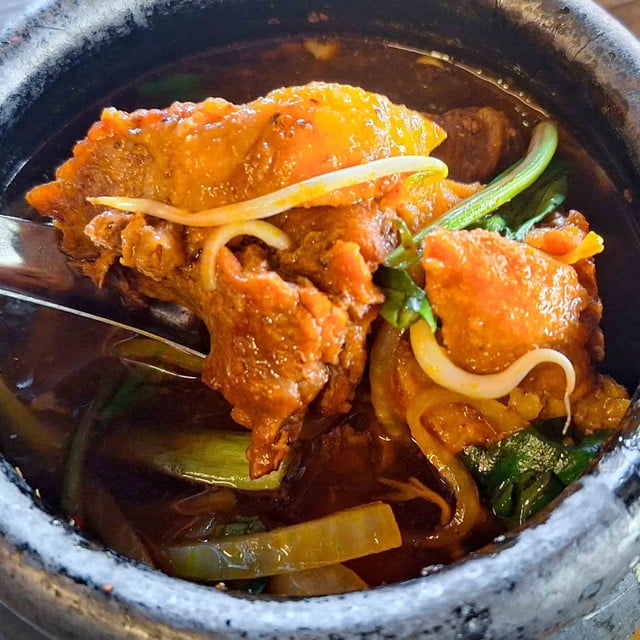
The rich beef stew is also on the top of the Michelin Guide's recommended list.
PHOTO: Organizing Committee
"If we want tourism to develop, we must definitely promote cuisine. When traveling, people have two basic needs: accommodation, or stay, and food, or experience the flavors. Both street food and high-end restaurants contribute to creating value for Vietnamese tourism," chef Hoang Tung shared.
Grasping this psychology, localities always exploit cuisine as a "weapon" to attract tourists and stimulate consumption. For example, Ho Chi Minh City - the leading locality in the country in attracting tourists, also continuously organizes large-scale culinary festivals such as the Saigontourist Group Food and Culture Festival, 3-Region Traditional Cake Festival, Southern Flavors or Saigon Street Food Festival. These events are not only a place to honor the quintessence of Vietnamese cuisine but also an effective solution to stimulate tourism.
In fact, tens of thousands of tourists flock to each festival, bringing significant revenue to service businesses, restaurants, and hotels. Many international tourists said they "got to know Vietnam through the food" and decided to stay longer to fully explore the local flavors. The clearest proof is Korean visitors. From pho, banh mi, mi Quang to bun cha, many Vietnamese dishes have become familiar to Korean audiences thanks to TV shows, culinary videos, and sharing by Kpop idols when visiting Vietnam. On platforms like YouTube and Naver TV, many Korean travel bloggers (travel content creators) call Vietnam a "culinary paradise" and praise "every dish is delicious at a better cost than Seoul". Not only enjoying, Korean tourists also come to Vietnam to experience local cuisine, from cooking classes, local market tours to Vietnamese-Korean fusion restaurants in Da Nang and Ho Chi Minh City.
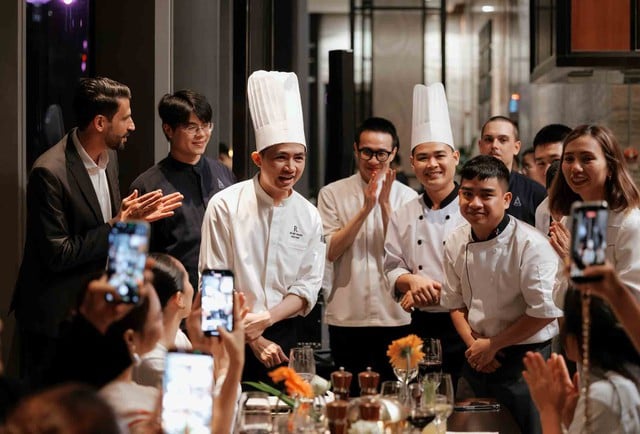
Talented young Vietnamese chefs have many opportunities to perform with Vietnamese ingredients and agricultural products.
PHOTO: Organizing Committee
According to the General Statistics Office, South Korea is currently the second largest international tourist market of Vietnam, after China. In September 2025 alone, Vietnam welcomed more than 420,000 Korean visitors, bringing the total to nearly 3.9 million in 3 quarters, accounting for about 23% of the total number of international visitors to Vietnam.
Vietnamese agricultural products in Michelin restaurants
In the luxurious menu at a restaurant on the 48th floor of Vinpearl Landmark 81 Hotel (the tallest building in Vietnam), more than 90% of the ingredients are selected from Vietnamese agricultural products. The dish that surprises many people is probably yam soup, but it is transformed differently from the traditional way of cooking by using fresh water spinach - almost a kind of medicinal leaf - in the dish to increase the fresh and bitter taste, leaving a strong impression when enjoying. Similarly, Ly Son seaweed, instead of being cooked in Korean style, is processed into a dessert, alongside tofu, lychee ice cream and custard apple panna cotta, a typical Vietnamese dish.
The menu also features Cu Chi beef instead of the premium imported beef that is still widely promoted. The beef dish is suggested to be served with white rice served in a small thermos bowl, this detail fully evokes the traditional dining habits of the Vietnamese people.
The owner of TUNG Dining restaurant shared: "Local ingredients are very important, especially in fine dining in the past 2-3 years. We use high-quality proteins from many places around the world, but the cooking philosophy, recipes and flavors all originate from Vietnam. We tell the story of Vietnamese cuisine in an international language."
On TUNG Dining's menu, luxury dishes such as Hokkaido scallops or Wagyu beef are combined with Phu Quoc fish sauce, fermented soybean paste or local herbs to create an experience that is both strange and familiar.
Meanwhile, the owner of An's Saigon restaurant, chef Cuong Nguyen, tells the story with his attachment to the motherland: "90% of our ingredients come from Vietnam. Even though customers want to experience high-quality foreign ingredients, I believe that if we don't use Vietnamese ingredients to the fullest, we are losing ourselves."
With that philosophy, An's kitchen is a place where rustic ingredients such as perch, wild boar meat, Central Highlands wild vegetables, Phan Thiet fish sauce, Hung Yen soy sauce... are gathered, but processed with modern techniques. One of the special seasonal menus at his restaurant is fried pho, premium Wagyu beef with soy sauce. "Vietnamese meat and fish can absolutely stand next to any ingredient in the world, as long as we know how to make it shine," he said.
Not only ingredients, spices such as soy sauce, fish sauce, pickles, wine, fermented rice, fermented bean curd... with their own identity and tradition are also being recognized by the young generation of chefs as a unique culinary "heritage" that needs to be approached by international tourists. A young chef said: "I once took a trip from Hanoi to the Northwest to research the history and fermentation tradition of Vietnam. I wanted to understand how the ancients created umami flavor using natural methods." At An's Saigon, chef Cuong and his team are implementing a separate project on "pure Vietnamese fermentation", aiming to standardize the process in a scientific way. "We want to prove that fermentation is not just a way of preservation, but the art of creating a unique Vietnamese flavor," he said.
Chef Cuong is aiming to divide the Vietnamese culinary map into regions such as the Northwest, Central Highlands, Northeast, or Southwest. "In the Northwest, there is mac khen, cham cheo, ant eggs; in the Central region, there is seaweed, sea salt; in the Central Highlands, there is bep leaves, Dak Lak pepper, wild honey; in the West, there is linh fish, dien dien flowers, tropical fruits... All are gold," he said. Similarly, Chef Tung is collaborating with Japanese chefs to research seaweed in Ly Son. He excitedly said: "Not only Japanese seaweed is delicious. We want to prove that Vietnamese seaweed also has its own flavor and value."
In fact, the culinary trend in 2026 is returning to "local ingredients". In Vietnam, this has become the philosophy of life and cooking of most of the chefs we met. Thanks to that, many familiar agricultural products from the fields have now appeared in fine dining restaurants honored by the Michelin Guide.
When the rice grains, fish, or vegetables from our homeland are told in a new language, Vietnamese cuisine will not only "rise in rank" in international rankings, but will certainly touch the hearts of global diners with the most familiar flavors of the Vietnamese people.
Top 10 countries with the most attractive cuisine in the world 2025 (According to Readers' Choice Awards - Condé Nast Traveller 2025):
Thailand - 98.33 points
Italy - 96.92 points
Japan - 96.77 points
Vietnam - 96.67 points
France - 96.12 points
Spain - 95.44 points
Mexico - 94.98 points
India - 94.22 points
Greece - 93.86 points
China - 93.35 points
The three most recent honors of Vietnamese cuisine in the world
1. Top 4 most attractive culinary cultures in the world in 2025 by Condé Nast Traveller Readers' Choice Awards.
2. Top 20 "Best Cuisines 2025" of TasteAtlas Awards, with highly ranked dishes such as pho, banh mi, bun cha, and iced milk coffee.
3. Top 19 in the "Top 100 World's Best Cuisines" 2024 in the Top 100 World's Best Cuisines 2024 ranking, the leading cuisine in Southeast Asia.
Source: https://thanhnien.vn/the-gioi-goi-ten-am-thuc-viet-nam-185251018220411268.htm


![[Photo] Collecting waste, sowing green seeds](https://vphoto.vietnam.vn/thumb/1200x675/vietnam/resource/IMAGE/2025/10/18/1760786475497_ndo_br_1-jpg.webp)







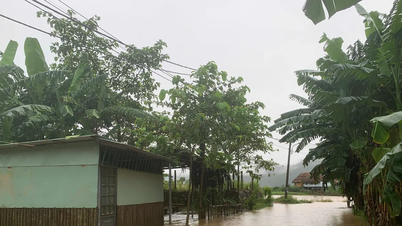

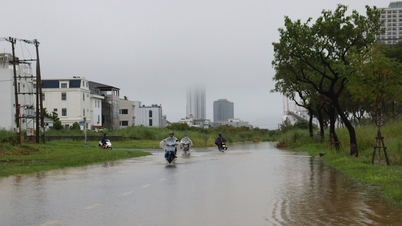
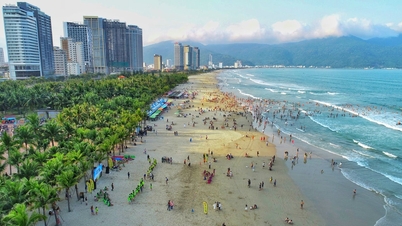



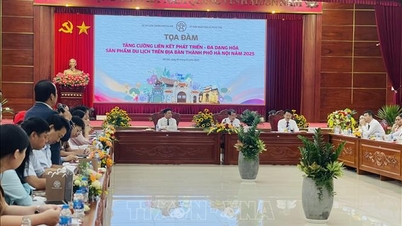



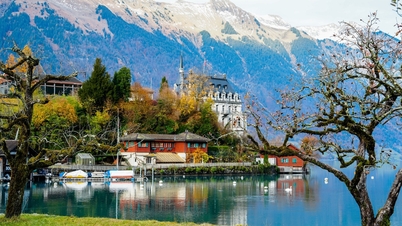

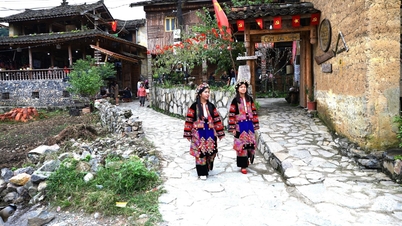












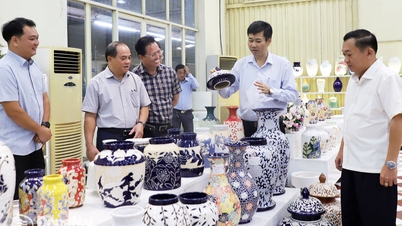









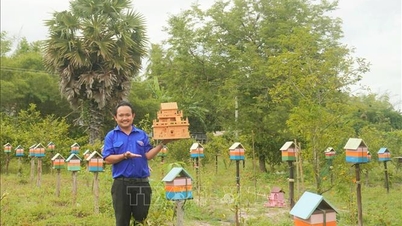




















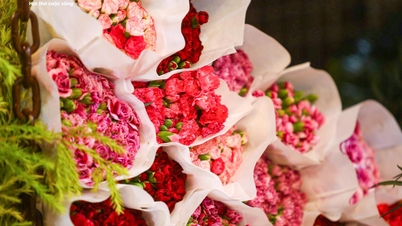


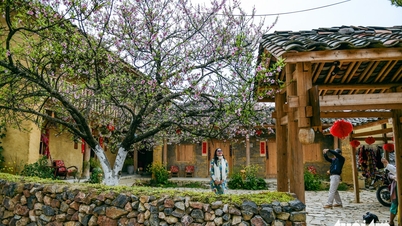









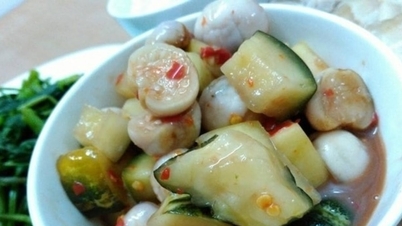
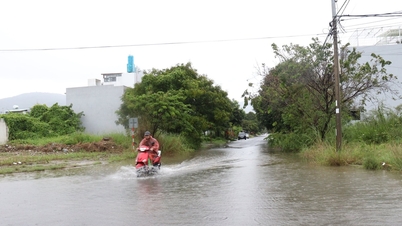




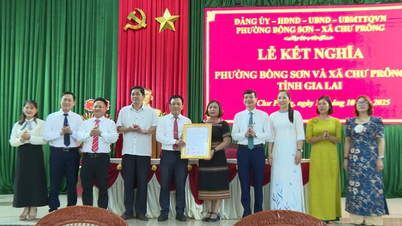
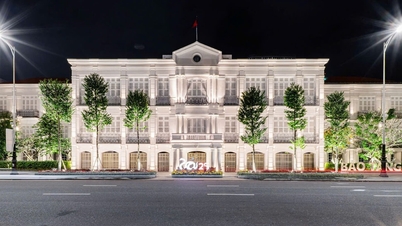
















Comment (0)